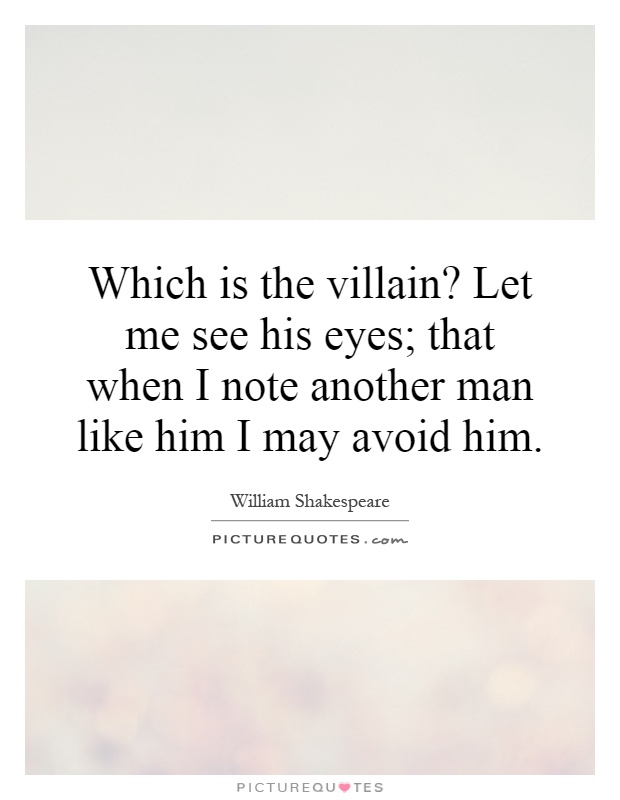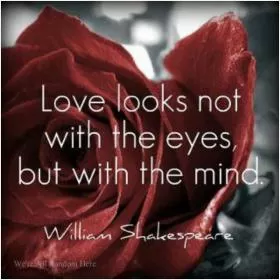Which is the villain? Let me see his eyes; that when I note another man like him I may avoid him

Which is the villain? Let me see his eyes; that when I note another man like him I may avoid him
In the world of William Shakespeare's plays, villains are often complex characters who possess both darkness and light within them. They are not always easily identifiable by their outward appearance or actions, but rather by the intentions behind their words and deeds. The quote, “Which is the villain? Let me see his eyes; that when I note another man like him I may avoid him,” speaks to the idea of recognizing the true nature of a person by looking into their eyes and understanding their motivations.Shakespeare's villains are often driven by jealousy, ambition, or a desire for power. They may appear charming and charismatic on the surface, but underneath lies a darkness that can lead them to commit heinous acts. By looking into their eyes, one can see the emptiness or malice that lurks within, allowing them to avoid falling prey to their manipulations.
One of Shakespeare's most iconic villains is Iago from Othello. Iago is a master manipulator who uses his cunning and deceitful nature to destroy the lives of those around him. His eyes are often described as cold and calculating, reflecting the evil that lies within him. By recognizing the darkness in his gaze, one can see through his facade of loyalty and friendship, and avoid being ensnared in his web of lies.
Another example of a villain in Shakespeare's plays is Lady Macbeth from Macbeth. Lady Macbeth is driven by her ambition for power and will stop at nothing to achieve her goals. Her eyes are often described as fierce and determined, revealing the ruthlessness that lies within her. By seeing the hunger for power in her gaze, one can avoid being drawn into her schemes and ultimately avoid becoming a victim of her treachery.












 Friendship Quotes
Friendship Quotes Love Quotes
Love Quotes Life Quotes
Life Quotes Funny Quotes
Funny Quotes Motivational Quotes
Motivational Quotes Inspirational Quotes
Inspirational Quotes